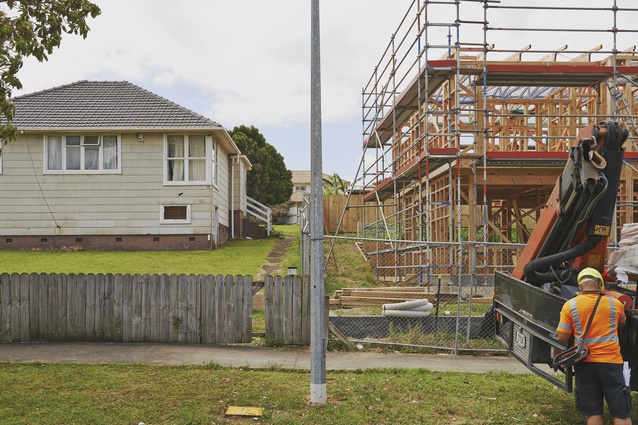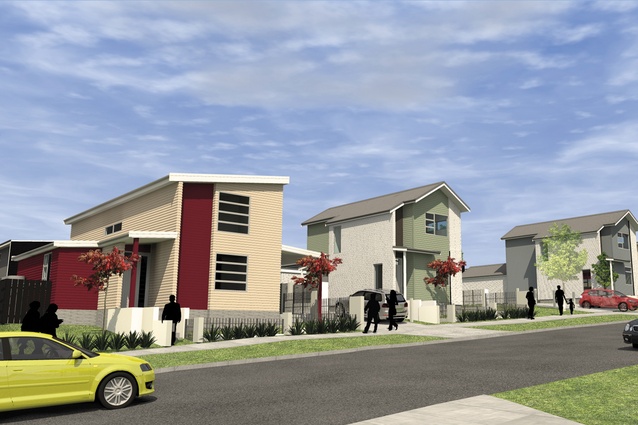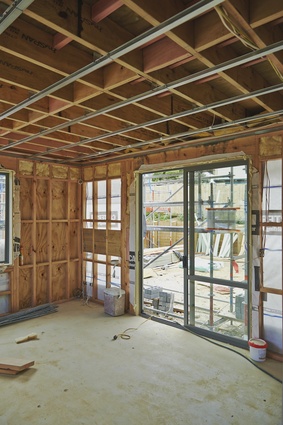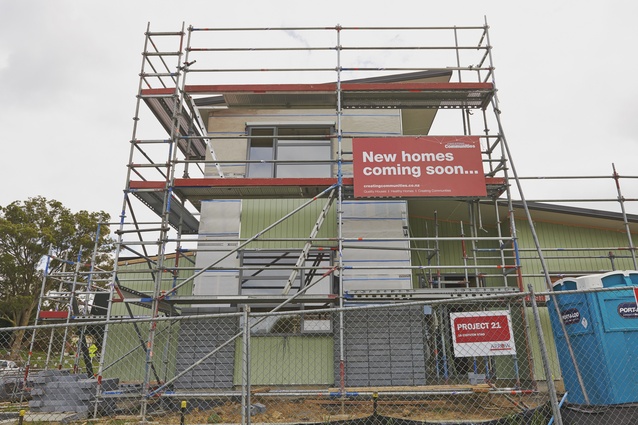Master planned
The northern Glen Innes project is transforming what has, for decades, been an area synonymous with state housing into an integrated community of state, private and 'affordable' dwellings.
Gone is the ubiquitous Kiwi quarter acre dream. What is swiftly taking its place is a pared back ambition; to own a limited-maintenance small section upon which a modern house with the latest fittings sits.
And for those in Auckland especially, the ideal for most, particularly those in the lower income brackets, or first home buyers, is that it costs well under the average house price - currently sitting at nearly $700,000.00.
Which is where Creating Communities comes in. The consortia, made up of Arrow International, Hopper Developments, Southside Group Management and Dryden Property, is developing two main parts of Glen Innes, a low socio-economic area synonymous with state housing and relatively central to Auckland’s central business district.
The suburb, gaining popularity because of its proximity to both central Auckland and the eastern bays, has become infinitely more attractive to first home buyers over the last few years as house prices have steadily escalated.
Creating Communities was contracted to buy and redevelop 156 existing sites from Housing New Zealand, 111 in the area between Line Road and Apirana Avenue, and 45 in Wai-o-Taiki Bay, east of Taniwha Street on a development area spanning approximately 13 hectares.
In stage one of the project, 18 sections will be converted into smaller sections on which 49 new dwellings will be constructed and completed by the end of 2014. In total, more than 300 new homes will be built between now and the end of 2015, delivering a mix of private housing, housing classified as ‘affordable’ or under the $480,000 benchmark, and state housing stock that will be sold back to Housing New Zealand.

Arrow International project director Mary Easterling said instead of the clearly identifiable state house, the new dwellings were architect designed and unique. “Everything will be integrated. From the road, you will not be able to tell the difference between a Housing New Zealand property and a private house,” she said.
“Housing New Zealand do have some specific requirements for the interior of its properties. For example, solid core doors are a necessity, as opposed to hollow core doors, because they last longer and can deal with more use.”
The typical house being constructed in stage one of the project is a four, or three-bedroom, double garaged, standalone dwelling. “Materiality is brick on the lower floor, with horizontal pine weatherboard on the upper floor. Feature elements will include vertical cedar cladding and half-height concrete masonry. A whole range of colour palettes will be utilised to differentiate the houses, all of which will have long-run steel roofing.”
The intensification of this area means the average section size has been reduced to 400m2, as opposed to the typical state house section that measured 840m2. “Typically what we are looking at is two or three houses replacing one, on what was a single section,” Ms Easterling said.
So far, the pace of construction has been about five months per old section, or completion of two or three houses, depending on the nature of the site. “The idea is deliver the product together, including landscaping.”
But the stock delivered won’t all be standalone houses; terraced housing will make up about 15 per cent of the total dwellings. Earthworks started in Glen Innes in September 2013, and by late November four standalone houses were well out of the ground. By mid-December 15 terraced dwellings were underway. The first two three-bedroom houses will be completed during March, with the first stage of the project complete by the end of the year, and the entire body of 300-plus houses ready by the end of next year.

“We expect to employ between 150 and 200 people across the trades concurrently at the peak of construction,” Ms Easterling said. And as the project ramps up, construction techniques will be honed. “The desire is not to utilise a cookie cutter approach though. The houses are all architect-designed.
“So far, we have focused on conventional builds, but by mid-2014 we will start to look at the opportunities for utilising some modular elements, such as having walls arriving in standard segments, which could potentially be clad and have services in them. We hope to develop some expertise in this area throughout the project, but there are lots of challenges. Modular construction ensures quality by way of the factory-controlled setting, but these are very tight sites so that constrains things somewhat.
“The sites are confined, but intensification does that. I think the houses we are building here are infinitely more preferable to apartments stacked on top of one another. And that is the market for brand new houses at the moment. People don’t typically want great big yards for their kids anymore.”
The most basic property in this project wll be a single-storey two-bedroom brick house designed in such a way that a third bedroom can be added at a later stage. “The idea is you can get in and add to it as you can afford it.”
Russell Cannons of concept architects Construkt said the project was at the forefront of Auckland Council’s vision for a more compact, efficient, livable city. “So it’s crucial that this development delivers an aspirational design response to assure the local population that intensification can be done well,” he said.
Construkt are now working on designs for stage two of the project, and aim to have all consents submitted to the council by mid-2014. “Of the 127 homes in the second wave of the project, there will be close to 40 different designs. We’re using a pallet of materials to deliver variety and, importantly, longevity. Being involved in this project has given us the opportunity to reshape what was a tired neighbourhood into a modern, proud, well-functioning community. In time it will likely become a desirable location.”













